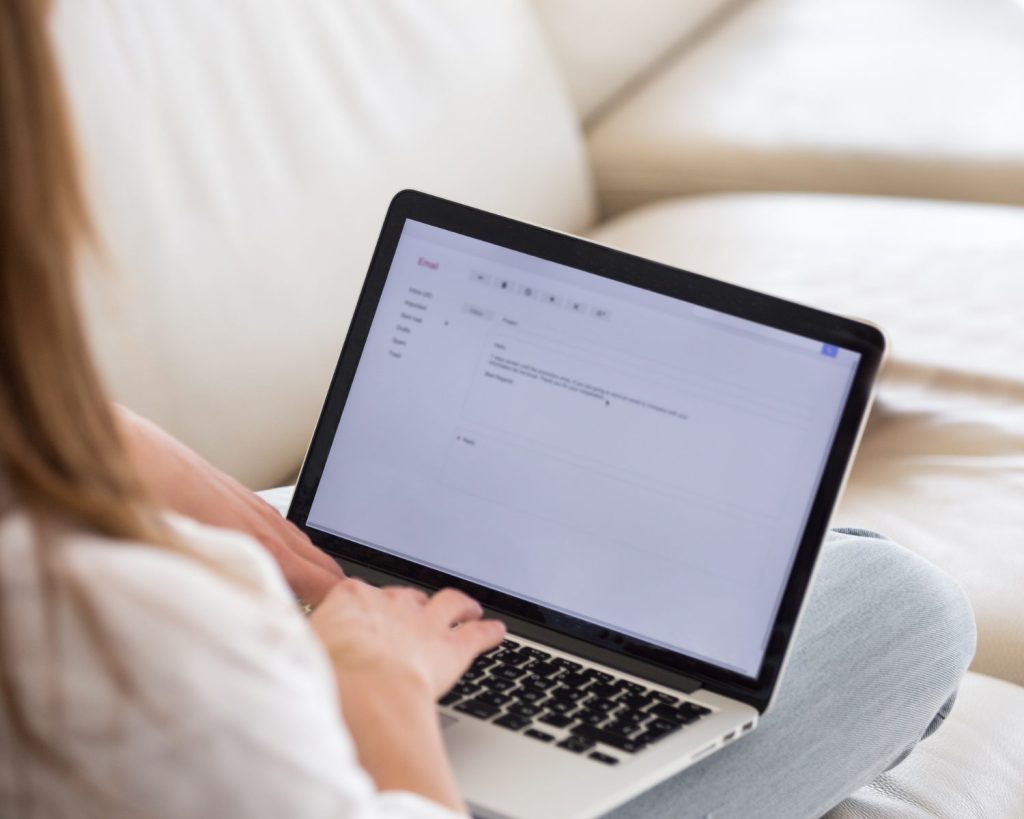When it comes to email marketing, timing is (almost) everything.
Although the best times to send emails are not set in stone as your schedule sending largely depends on what industry you’re in and whether you are a B2B or a B2C brand, the useful data about your target audience will help you make a more informed decision and utilize email marketing in a more “time-sensitive” manner.
That is why in this guide, we provide you tips on how you can use the time factor to your business’s advantage to better set up your marketing campaigns for success!
Without further delay, let’s begin by knowing…
Why Email Sending Time Matters
![]()
If you want to make your emails have an impact, you need to send them at the right time. You already know this, right?
People – or your target audience specifically – get several emails in their inboxes every single day.
And if they’re working in the office when they receive your email, for instance, there’s a chance that it will not be personally attended to or worse… could end up in the trash.
When you send your email matters just as much as the content itself. Regardless of the value in your content or how snazzy your subject line is, you are not guaranteed a response or get the result you want if no one sees your message.
So, to achieve high open rates, conversions, and click-through rates, you need to implement email marketing best practices and put all elements in the right place.
And trust us, spending time to design the perfect email marketing strategy is not something that email marketers take lightly.
In other words, you should take your email sending seriously.
Email Send Times: Personal vs. Professional Email Addresses
To know the best time to send your campaigns, consider first if you are a business-to-business (B2B) company or a business-to-consumer company.
This is because people do not usually use their professional inbox and their personal inbox at the same time or in the same way.
Some people get notifications each time a new email comes in, others rarely use their personal email addresses while at work. Some professionals regularly check their work emails.
So, do you send email marketing campaigns to professional or personal email addresses?
Based on your previous campaigns, is your email list more likely to open their email early in the morning or during lunch break?
Once you know how your email subscribers engage with your emails, use such data to create email marketing benchmarks and determine the right time to send your newsletters.
What Is the Best Time To Send An Email Blast?
Most email opens happen between 10 AM and 12 PM, based on the recipient’s time zone.
In fact, many industry experts consider these times to be the prime sending window because subscribers have already settled into their day, but in such a way that are not yet too focused on their everyday tasks to not mind their inboxes.
You can also expect higher open rates at around 5 and 6 PM. We recommend you consider these best send times based on the hour as your starting point when you validate your choice of when to send an email blast.
Here’s a guide to choose when is the best time to send email blasts:
- 6 – 8 AM: Some people are looking at their emails when they wake up or during breakfast. Make sure to include also in your email marketing strategy to make your newsletters/ campaigns mobile-optimized as people checking their emails in this sending window often use mobile.
- 10 – 11 AM: This is the best time to send your email as the majority of people check their emails in the morning, more than at other times of the day.
- 12 – 2 PM: This is still a good sending window because people will look at their emails before they get back to work.
- 5 – 6 PM: Another peak that emails generate a high open-rate.
A 2021 email engagement report likewise shows that 63.3% of users interact with their personal emails at different points throughout the day. Here’s what the numbers say when asked: when do you check your personal emails?
- 27.2% – When I wake up
- 42.5% – In the morning
- 31.1% – Around lunchtime
- 32.3% – In the afternoon
- 34.3% – In the evening
- 19.4% – Before I go to bed
It’s important to note, though, that just because one is checking their email also means they have the capacity at that moment to act on it. That’s why getting the right timing remains the key driver to achieving a good email engagement.
[You may also like: How to Send Mass Emails Without Landing in Spam]
But Wait… Timing is Not Just About the Time of the Day
It’s a trap to think that the “best time of day” refers only to the ideal time to send emails. That’s because the success of your campaign also depends on the day you send it.
Using Google Analytics to Find the Optimal Time for Email Sends
So, if you want to measure the best days to send an email that applies to your industry and email list, we recommend you to use Google Analytics, Facebook Insights, or other tools.
These tools take a lot of guesswork out in finding that optimal time to send an email. Let’s say you want to use Google Analytics.
On the front page or dashboard of Google Analytics, you’ll see a widget, “When do your users visit?” This tells you the traffic breakdown of hours-in-the-day in one axis and days-of-the-week in another axis.
The darker the area in that traffic breakdown is, the more email traffic is in that time frame. Of course, this differs for everyone and would depend on when your visitors and leads are the most active.
Gaining insights from the Google Analytics dashboard may take some trial and error, but after the process, it will be less tricky to figure out the ideal day to send.
Do you still believe you can’t get a solid estimate by simply checking your analytics? Below is a general idea of the best day to send your newsletters.
What Is the Best Day to Send Your Email Campaigns?
If you go by the conventional wisdom on what it tells you about email timing, it means putting yourself in the shoes of your recipients – considering their daily routines, mindsets, and habits.
You may not have all the data yet, but you most probably already know who your target audience is. And often, their week plays out like this:
Monday
They are busy adjusting back to their workweek. Meaning, business emails will be prioritized over promotional emails, and that is the worst time to send newsletters. Surprisingly, 2021 data shows that it can still generate a good open rate.
Midweek
The middle of the week is also a good time to send your email campaign as your subscribers are settled into their work routine and are likely checking their inboxes.
In fact, Campaign Monitor’s research shows that Tuesday is the best day for high click-through rates (CTR) while Thursday is the winner for high open rates.
Friday
This is the day when your subscribers are already hoping for the weekend to come and rushing to finish their work.
Still, Friday afternoons (especially right after lunch) can be a good time because people are winding down and less likely to begin new tasks.
Weekend
It’s actually a tricky one. Some people after considering their cultures, like those in Italy and in France, rarely check their inboxes outside working hours.
However, in other cultures, like the United States, people prepare for work the evening before the workweek. So, Sunday evenings may still be an ideal time and will help you achieve good email deliverability.
Before deciding on the best time to send an email blast, ask yourself the following questions:
- Who is your target audience?
- What are their main problems?
- How can you help solve these problems with your service or products?
- What do they do for a living?
- What does their typical day look like?
Best Time to Send Email by Location – Sending Emails Across Cultures
To be seen as an effective and clear communicator, you have to think from the perspective of the other party.
One survey highlights cultural differences when it comes to better spending time.
People from Spain and France, for instance, are 10% less likely to open their emails at lunchtime compared to people in Germany, the UK, and the US.
That is why it is best to always segment your audience first before blasting that email out.
When to Use Link Triggers to Send Emails at The Right Time
Another great way to streamline communication and make sure that your campaigns are sent out consistently and timely is using trigger emails or sometimes called automation triggers.
Rather than figuring out when is the best time to send a newsletter to your email list, you rely on link triggers to send individual emails based on each person’s actions.
When a subscriber clicks on a link in your campaign, it triggers another email that corresponds to the topic that they are interested in at the moment. This is useful in email marketing because it already dictates that it is a good time to send an email.
Here are some key customer actions that you can include in a trigger email campaign:
Welcome emails
Trigger an automated workflow when a subscriber joins your mailing list.
Offer them valuable information not just about your brand or company but also your products or services.
Typically, welcome emails are warm and they engage your new reader in things they can expect in the future.
Birthday emails
Celebrate your subscriber’s special day with a triggered email. It makes them feel remembered and not just an additional number on your email list.
Birthday emails may be sent a few days or weeks off and usually include a sort of discount.
Reactivation emails
These emails help connect with inactive or sleepy subscribers who have not engaged with your emails.
They help remind subscribers of how your business will help them. You may even sweeten the deal by offering them an incentive.
Transactional emails
Transactional emails inform your subscribers of their payments, tracking information, purchase, and more.
You may think transactional marketing only pinpoints a single sale, but, in reality, it can lead to long-term sales growth.
When paired with the right email strategy, marketers can build a consistent and cohesive customer experience and benefit from all touch-points along the way.
Abandoned cart emails
Cart abandonment has been a major issue in e-commerce. However, there are also tools to recover those abandoned carts.
One of these tools is multi-stage cart abandonment emails. Well, basically they are also just triggered emails sent out after a cart is abandoned.
This type of email allows you to re-engage with the “abandoners,” interact with them, and improve customer relationships.
Abandoned cart emails are sometimes the extra push that converts a subscriber into a customer.
How to Tell If Your Timing Is Right
As with other digital marketing strategies, you need to give your email marketing efforts enough time to start working. How then will you know if your timing is right? Should you just rely on the benchmark click and open rates?
We suggest you don’t measure your email marketing success from those data right from the bat. Instead, look to achieve an improvement in these metrics with each new batch of email blast you send out:
- More offline inquiries
- Improved email open rates
- Increased in brand name search
- Increased website traffic from email
Other Factors in Email Marketing That Are As Important as Timing
Despite knowing the best time and day to send an email, it will still be irrelevant if you don’t constantly optimize your marketing emails for higher conversions.
That’s why we recommend you also do minor improvements, like writing more compelling email subject lines, crafting higher-converting email CTAs, and engaging more subscribers, to get the best result.
In a more in-depth guide, here are some “spices” in email marketing that you can add to your perfectly timed email blast.
1. Spend time on the email subject line
Email subject lines are usually emphasized as an important element equal to email timing or frequency and for a good reason. Recipients will either open and click your email or market it as spam.
Don’t stop testing and adjusting to find the kind of subject lines that works extremely well for your campaign.
Using an email serving provider that allows you to test, segment, and compare your campaigns will help your team analyze the different variables at play.
2. Focus on what the target audience will get out of the deal
One of the significant lessons you may have already learned in email marketing is to always focus on what benefit the recipient will receive.
So, emphasize that benefit or solution if they complete the action you are funneling towards them.
3. Invoke a sense of urgency (but not too much)
Make your subscribers feel rushed because it will make them move faster.
However, avoid making them feel the need to make a purchase on the spot. Usually, a 48-hour window does the trick.
4. Provide examples of companies/people they could become
By showing examples of success stories and satisfied customers, you will be selling more than a service or product. You will likewise be serving a successful lifestyle, something that most leads would want to buy into instead of a simple sales pitch they may also be receiving from other companies.
5. Send follow-up emails
A follow-up tends to have better response rates than a welcome or confirmation email.
After all, they make customers feel special and this increases the reliability process for your customers.
It gives your customers the chance to engage effectively and to be heard. You may do it manually or automatically. All you need is to have the right schedule. Generally, what works well for follow up emails are sending:
- 48 hours after the initial email,
- within 5 to 7 days if there is no urgency to your message,
- every 3 months just to stay in touch and not let the line of communication die out, or
- send it in the middle of the week to not end up on the Monday morning email pile.
Keep Your Email Marketing Fresh!
Finding the best time to send an email blast may feel like a shot in the dark, especially if you are still ramping up your email strategy.
But you can take a lot of guesswork out by applying some of the tips we shared above to avoid sending your email campaigns at the wrong time.
In summary, we found that the best day of the week to send email blasts is Tuesday, closely followed by Thursday. The best time of the day that generates the most opens is between 10 AM and 12 PM (in the subscriber’s time zone) and another peak is between 5-6 PM.
However, all these are just the prime sending window. There is no one-size-fits-all answer, really. The type of emails you send, your goal, your customers, the type of business you have, the industry you’re in all determine your best schedule.
Want to maximize your email marketing potential beyond sending your campaign at the best time? We, at InboxAlly, can help you on your path towards 100% deliverability.





